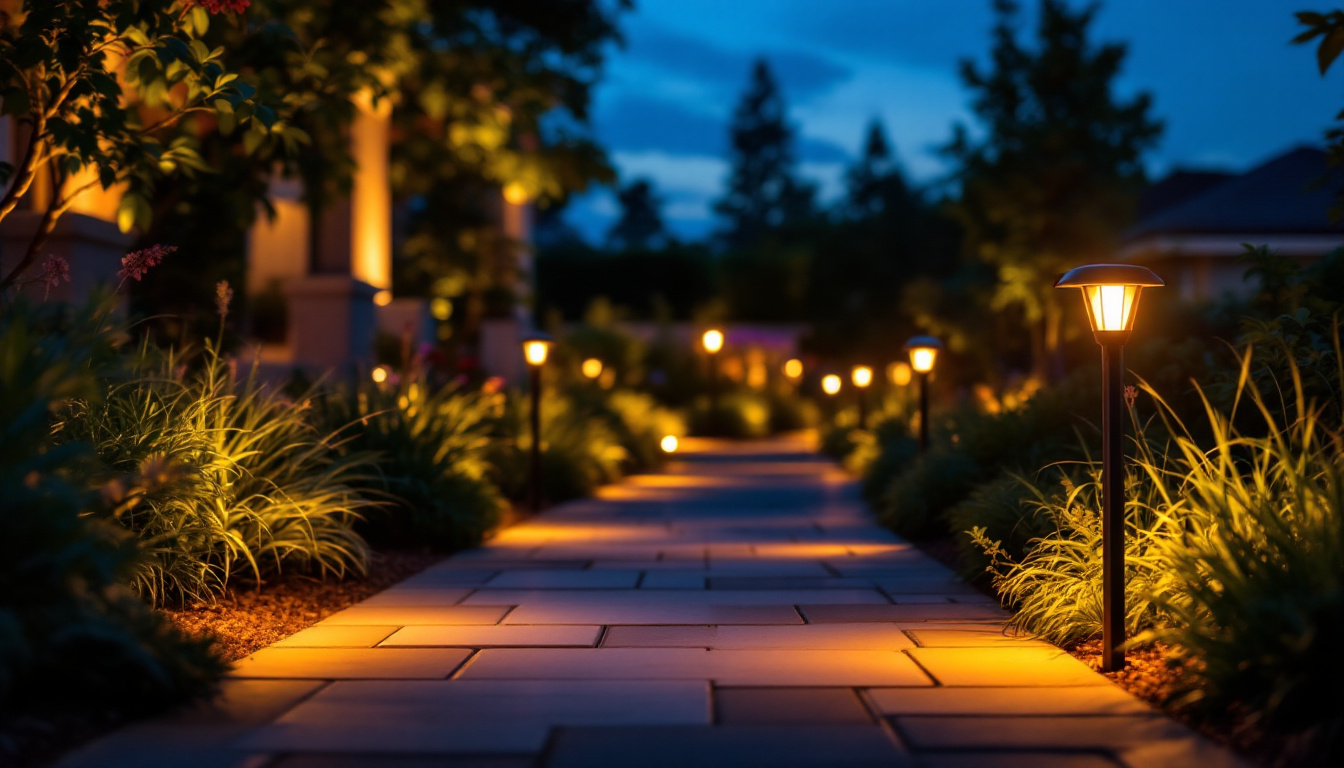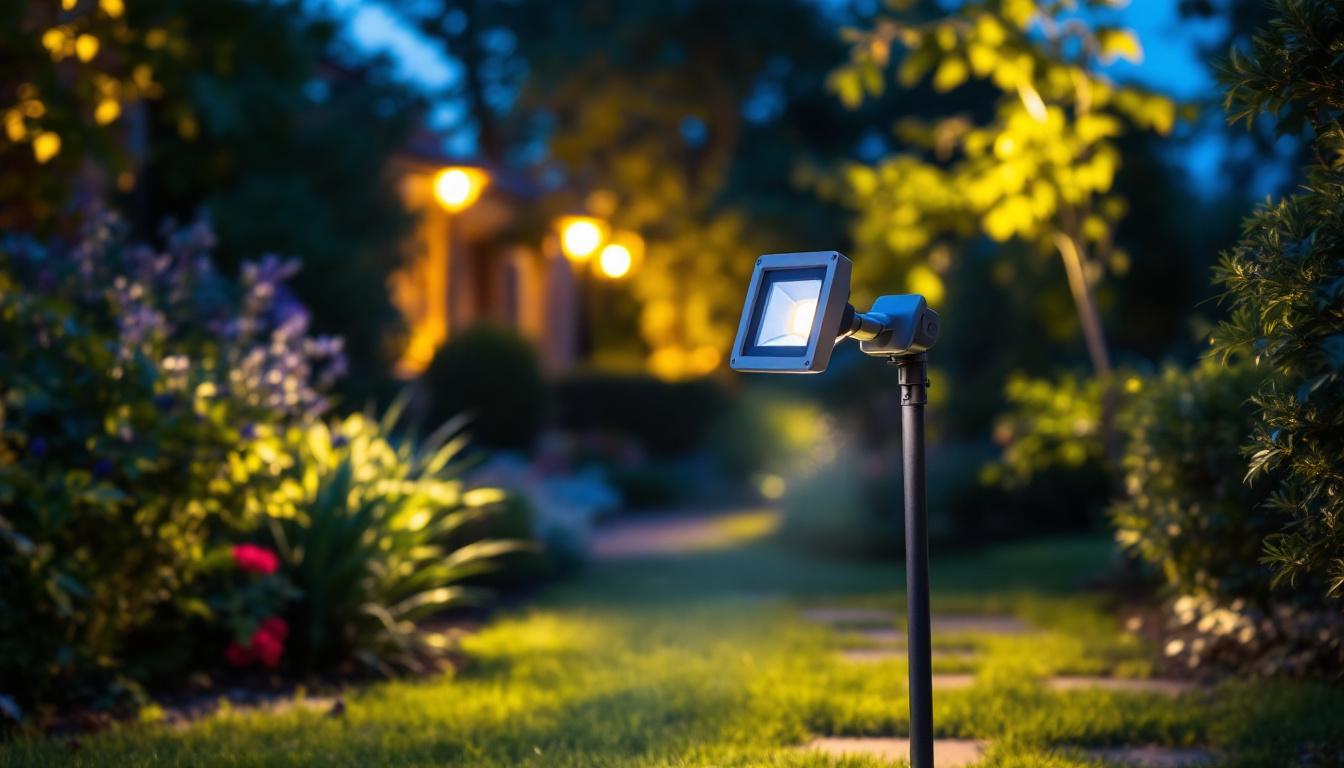
As the demand for sustainable and energy-efficient solutions continues to grow, LED solar pathway lights have emerged as a popular choice for both residential and commercial applications. For lighting contractors, understanding the nuances of these products is essential to delivering quality installations that meet client expectations. This article provides key insights and practical tips for working with LED solar pathway lights, ensuring contractors are well-equipped to navigate this evolving market.
LED solar pathway lights are designed to illuminate walkways, gardens, and outdoor spaces using solar energy. These lights harness sunlight during the day, converting it into electricity to power LED bulbs at night. This eco-friendly approach not only reduces energy costs but also minimizes the carbon footprint associated with traditional lighting systems.
The advantages of LED solar pathway lights are numerous. Firstly, they are incredibly energy-efficient, consuming significantly less power than conventional incandescent or halogen lights. This efficiency translates to lower electricity bills for clients and a reduced environmental impact.
Moreover, the installation of solar lights is often simpler and more cost-effective. Without the need for extensive wiring or electrical connections, contractors can save time and labor costs. This ease of installation makes solar lights an attractive option for both residential and commercial projects. Additionally, many solar pathway lights come with adjustable brightness settings and motion sensors, allowing for customizable lighting solutions that enhance security and convenience.
To effectively work with LED solar pathway lights, it is crucial to understand their key components. Most solar lights consist of a solar panel, LED bulb, battery, and a light sensor. The solar panel collects sunlight and converts it into electrical energy, which is stored in the battery for nighttime use. The light sensor detects darkness, automatically turning the lights on at dusk and off at dawn.
Familiarity with these components allows contractors to troubleshoot issues and recommend the best products for specific applications. For instance, understanding the battery capacity and solar panel efficiency can help in selecting lights that provide adequate illumination for the intended area. Furthermore, advancements in solar technology have led to the development of more durable and weather-resistant materials, ensuring that these lights can withstand various environmental conditions, from heavy rain to extreme heat, thus prolonging their lifespan and reliability.
Additionally, many modern LED solar pathway lights come equipped with smart technology features, such as remote control options and app connectivity, allowing users to monitor and adjust their lighting settings from their smartphones. This integration of technology not only enhances user experience but also opens up possibilities for energy management, enabling homeowners and businesses to optimize their outdoor lighting according to their specific needs and preferences.
Selecting the appropriate LED solar pathway lights requires careful consideration of several factors. Contractors must assess the specific needs of the project, including the desired brightness, aesthetic appeal, and durability of the lights.
Brightness is a critical factor in the effectiveness of pathway lighting. Measured in lumens, the output of light varies significantly among different products. For pathways, a range of 100 to 200 lumens is typically sufficient, depending on the area’s size and the level of illumination desired. Contractors should advise clients on the appropriate lumen output based on their specific needs.
Additionally, it’s essential to consider the color temperature of the LEDs. Warmer tones (around 2700K to 3000K) create a welcoming ambiance, while cooler tones (4000K and above) provide a more modern and crisp appearance. Understanding these nuances can help contractors make informed recommendations that align with the client’s vision. Moreover, the placement of the lights can also influence the perceived brightness; strategically positioning lights to highlight pathways and landscaping can enhance both safety and aesthetics, creating an inviting atmosphere for evening gatherings or strolls.
Outdoor lighting is subject to various environmental conditions, making durability a key consideration. Contractors should look for lights constructed from high-quality materials that can withstand rain, snow, and extreme temperatures. Products with an IP65 rating or higher are generally considered suitable for outdoor use, as they offer protection against dust and water ingress.
Furthermore, it is wise to choose solar lights with tempered glass lenses rather than plastic, as they are less prone to scratching and yellowing over time. This attention to durability ensures that the lights will maintain their performance and aesthetic appeal for years to come. In addition, many modern solar lights come equipped with features such as automatic on/off sensors and adjustable brightness settings, which not only enhance convenience but also contribute to energy efficiency. By selecting lights with these advanced functionalities, contractors can offer clients a solution that not only meets their immediate needs but also adapts to changing conditions and preferences over time.
Proper installation is crucial for the optimal performance of LED solar pathway lights. Contractors should follow best practices to ensure that the lights operate efficiently and effectively.
Before installation, a thorough site assessment is necessary. This involves evaluating the amount of sunlight the area receives throughout the day. Ideally, solar panels should be placed in locations that receive direct sunlight for at least six hours daily. Areas shaded by trees, buildings, or other obstructions may require alternative lighting solutions or adjustments to the placement of the solar lights.
Additionally, contractors should consider the spacing between lights. A general guideline is to place pathway lights about 6 to 8 feet apart, depending on the brightness and intended use of the area. This spacing ensures even illumination without creating overly bright or dark spots along the pathway.
Positioning the solar lights correctly is vital to maximizing their efficiency. Lights should be installed at a height that allows for optimal light distribution while minimizing the risk of obstruction from plants or other landscape features. A height of 24 to 36 inches is often ideal for pathway lights.
Moreover, contractors should ensure that the solar panels are angled appropriately to capture sunlight effectively. Adjusting the angle can significantly enhance the energy collection, leading to better performance at night.
Dust, dirt, and debris can accumulate on solar panels, reducing their efficiency. Regular cleaning is necessary to maintain optimal performance. Clients should be advised to wipe the solar panels with a soft cloth or sponge periodically, especially after heavy storms or windy conditions that may leave residue on the panels.
Additionally, checking the battery and LED bulbs periodically is crucial. If the lights are not functioning as expected, it may be due to a depleted battery or a burnt-out LED. Educating clients on how to replace these components can empower them to address minor issues without needing professional assistance.
Despite their simplicity, solar lights can encounter problems. Common issues include insufficient brightness, lights not turning on, or inconsistent performance. Contractors should be prepared to troubleshoot these problems effectively.
If the lights are not turning on, the first step is to check the solar panel for obstructions and ensure it is clean. If the lights are dim, it may indicate that the battery is not holding a charge, necessitating a replacement. Understanding these common issues allows contractors to provide prompt solutions, enhancing client satisfaction.
The landscape of solar pathway lighting is continually evolving, driven by advancements in technology and changing consumer preferences. Staying informed about emerging trends can give contractors a competitive edge in the market.
One of the most significant trends in outdoor lighting is the integration of smart technology. Many new solar pathway lights now come equipped with features such as motion sensors, remote control capabilities, and smartphone connectivity. These innovations allow users to customize their lighting experience, enhancing convenience and energy efficiency.
Contractors should familiarize themselves with these smart features and be prepared to offer clients options that align with their technological preferences. Educating clients on the benefits of smart lighting can help them make informed decisions that enhance their outdoor spaces.
As design trends evolve, so too do the aesthetics of solar pathway lights. Manufacturers are increasingly focusing on creating stylish and modern designs that complement various architectural styles. From sleek metallic finishes to decorative lantern-style options, there is a growing variety of choices available.
Contractors should stay updated on the latest designs and be ready to recommend products that align with the client’s overall landscape vision. A well-chosen light fixture can enhance the beauty of outdoor spaces while providing practical illumination.
LED solar pathway lights represent a significant advancement in outdoor lighting, offering energy efficiency, ease of installation, and environmental benefits. For lighting contractors, understanding the intricacies of these products is vital for successful installations and satisfied clients.
By considering factors such as brightness, durability, and proper installation techniques, contractors can ensure that their projects meet the highest standards. Additionally, staying informed about emerging trends and educating clients on maintenance will enhance the overall experience and foster long-term relationships.
As the market for solar lighting continues to grow, embracing these key tips will position lighting contractors as knowledgeable professionals ready to meet the evolving needs of their clients.
Ready to elevate your lighting installations with the efficiency and elegance of LED solar pathway lights? At LumenWholesale, we provide lighting contractors with the highest quality, spec-grade lighting products at unbeatable wholesale prices. Say goodbye to local distributor markups and hello to superior lighting solutions that meet the highest industry standards. With our hassle-free bulk buying and free shipping, you can stock up on premium lighting without hidden fees or compromises. Enhance your projects with the perfect blend of quality, affordability, and convenience. Discover our extensive selection and secure the best value in wholesale lighting by visiting Wholesale Lighting at the Best Value today.

Discover how concrete posts can revolutionize your outdoor lighting setup with energy-efficient solutions.

Discover how lighting contractors can enhance their business by focusing on house spotlights outside.

Discover how the best motion detector flood lights can revolutionize cost efficiency for lighting contractors.

Discover the essential best practices lighting contractors swear by when installing 4-inch recessed lights.